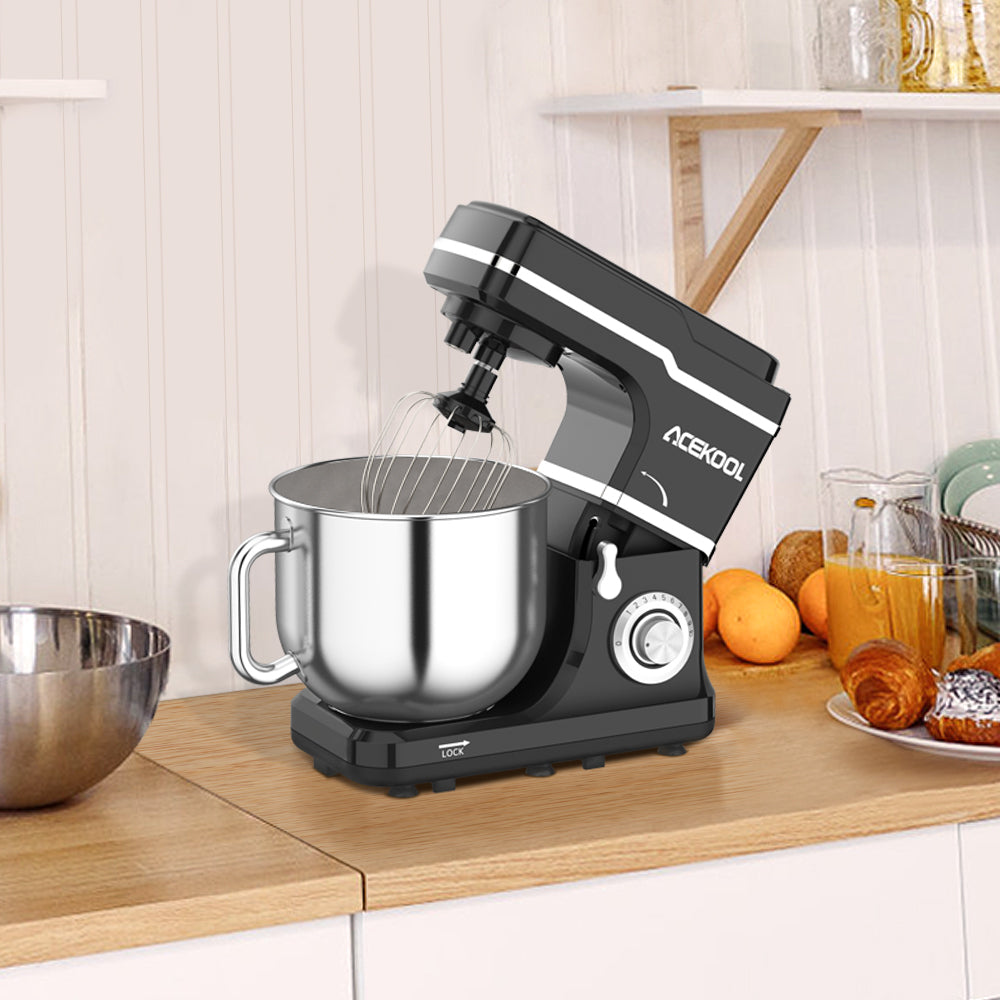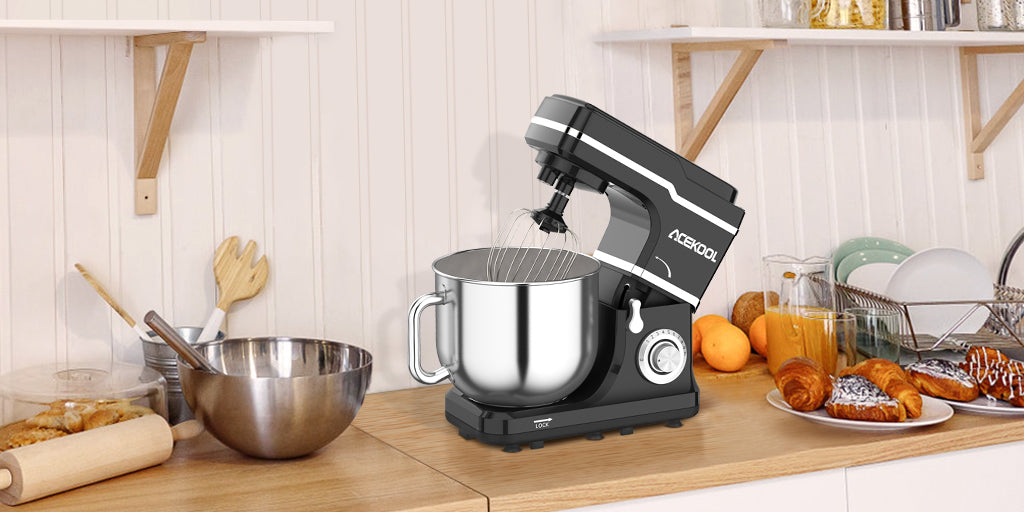
What Size Stand Mixer Do I Need?
Share

The time when cooks at home and restaurants used to stir ingredients by hand is over. From cookie dough to egg whites, everything that requires vigorous stirring has been mechanized after the innovation of electric mixers.
Tilt-head electric stand mixers are commonplace in any kitchen whether it be a home or a restaurant. It is indispensable considering the range of mixing tasks that you come across while cooking. Compared to mixing with hands, an electric mixer does a better job with minimal time and effort.
There are two main types of mixers, namely, hand mixers and electric mixers. Hand mixers are common in households where small mixing tasks like whisking eggs, mixing cookie dough, etc. can be done. While a hand mixer is a handheld device, a stand mixer is a device that needs a permanent spot on your kitchen counter. A stand mixer is for people who do elaborate cooking that requires mixing ingredients regularly.
Properties of a Stand Mixer:
A tilt-head electric stand mixer houses a powerful motorized base with a head that holds the beater attachments. Placed right underneath the head is a bowl that locks into place beneath the beaters. A stand mixer is usually pricey because it is a powerful piece of equipment. It is more efficient and better at evenly combining ingredients and therefore cuts down on your meal prep time.
Built to last, a stand mixer has a powerful motor that can tackle stiffer doughs, such as thick cookie dough or bread dough. Some stand mixers have extra accessories that are available for purchase which adds to the functionality of the machine. These accessories will help you to use the machine for everything from making ice cream to making sausage. However, do note that a good stand mixer is quite expensive as they usually start at around $200.
What Size Stand Mixer Do I Need?
The size of your stand mixer definitely matters, but considering that bigger sizes will cost more money, it is not recommended to buy a larger sized mixer unless it is absolutely necessary. Some brands have miniature machines that have a smaller capacity compared to their main line of products. These are more cost-effective and appropriate if you don't have large-scale mixing needs.
Usually, the electric mixer brands in the market showcase stand mixers that range from 3.5 to 8-quart capacities. The standard size is between 4.5 and 5.5 quarts. This is large enough to bake a batch of cookies or knead a loaf of bread. If you do a lot of large-quantity cookies or bread baking, you would want to choose a larger mixer.
Capacities of Mixers:
1. 5-8 Qt. Mixers – These are small, compact units that can mix up to about 4 pounds of bread dough, 4 pounds of thick pizza dough, 4 pounds of mashed potatoes, and 1.8 qats. of whipped cream. These won't be able to tackle tough dough because their maximum motor strength is typically 0.5 HP. If you are looking for a size somewhere in between this, you can opt for a 7.5QT stand mixer. Check out the Acekool Tilt-Head Electric dough mixer, they are just apt for all your everyday mixing needs.
2. 10 Qt. Mixers –These are slightly larger units compared to 8 Qt mixers and can accommodate about 5 pounds of bread dough, 5 pounds of thick pizza dough, 5 pounds of mashed potatoes, 8 pounds of cake batter, and 2 qts. of whipped cream. So get this one if your mixing needs are higher and the quantity larger.
3. 20 Qt. Mixers – These are mid-size mixers perfect for a large family. These mixers have more power and can handle higher quantities and densities. They can mix about 25 pounds of bread dough, 20 pounds of thick pizza dough, 15 pounds of mashed potatoes, and 4 qts. of whipped cream.
4. 30 Qt. Mixers – 30 Qt. mixers and sizes above that are considered floor mixers. These are designed to sit on the floor of the kitchen. These can hold up to 45 pounds of bread dough, 40 pounds of thick pizza dough, 23 pounds of mashed potatoes, 30 pounds of cake batter, and 6 qts. of whipped cream. They usually house 3 HP motors. If you have a small home baking business, you can opt for this one.
5. 60 Qt. Mixers – These are large mixers made for use in huge factories, pizzerias, and bakeries. These are made for operations that produce very high volumes of dense dough. They have powerful motors that are durable enough to withstand mixing these doughs. They can handle up to 90 pounds of bread dough, 70 pounds of thick pizza dough, or 60 pounds of cake batter.
Other Factors to Consider:
Make sure that you check the wattage of the product before buying a mixer. If you have only minimal mixing tasks like whisking eggs and a small batch of cookie dough, then you can opt for one with 250 watts of power. If you spend a lot of your time baking or are buying it for a commercial purpose, it is better to choose a mixer that has more than 500 watts of power.
Another factor to consider is the design of the mixer. Most stand mixers have a tilt-head design, where the bowl remains intact locked into the base. The head is placed on a hinge so it can be tipped up to lift the beaters out of the bowl. On the other hand, the bowl-lift design features a stationary mixing part while the bowl is adjustable. Once you fill the dough in the bowl you can move it up to the mixer and latch it in place. Once you are done mixing you will have to unlock the bowl so that you can remove it along with the attachments.
Stand mixers are quite expensive and therefore you should carefully consider the brand and other requirements before investing in one. Calculate how much ingredients you mix regularly and get a mixer according to that quantity. Also, check for the durability and the attachments that accompany the product.